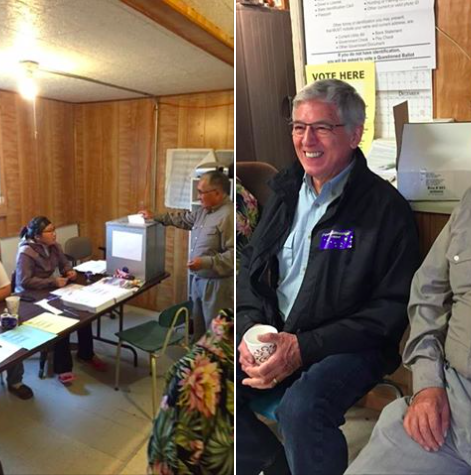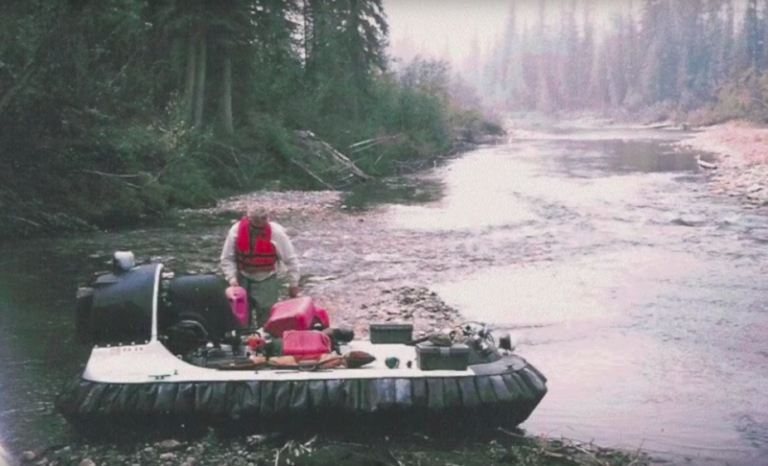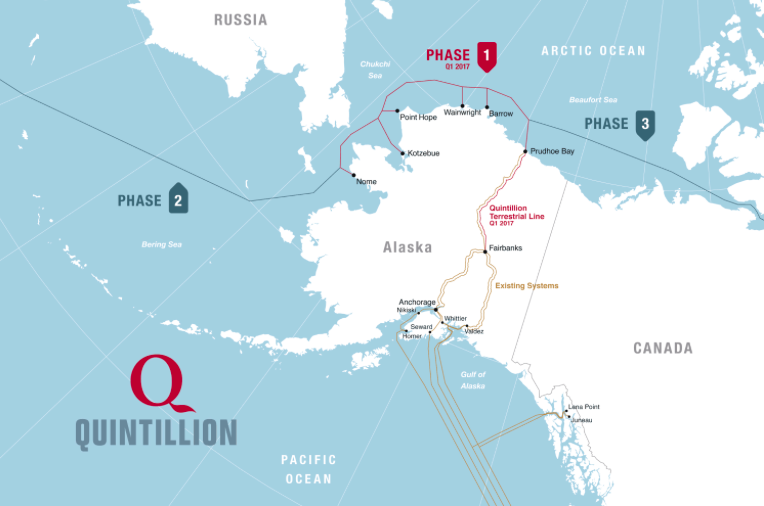
BALLOTS COUNTED – SURPRISE, IT’S A WIN FOR WESTLAKE, PERHAPS
Although Rep. Ben Nageak of Barrow has reportedly conceded the District 40 election to Dean Westlake of Kotzebue (source: Westlake’s Facebook page), the primary election held on Aug. 16 gave Alaskans a chance to see just how good the Division of Elections is performing under Lieutenant Governor Byron Mallott.
Some Alaskans were underwhelmed. Ballots were counted late. Reporting was spotty. Ballot security was, well, insecure.
Numerous serious election violations have cropped up in both District 40 and 38.
So much so, that State Senate Affairs Chairman Bill Stoltze has called a hearing for Monday at the Legislative Information Offices in Anchorage to review the problems.
(Earlier story: Elections were an unholy mess.)
Meanwhile, the Division of Elections’ mysterious media blackout ended late Friday night and it released its final results, which included questioned, absentee, and other ballots that simply appeared out of nowhere.
Among those random ballots that appeared, one set causes a raised eyebrow: A dramatic increase in “personal representative voting” in some places that exceed what would be statistically likely.
People who are unable to vote on election day have many choices:
- In person (15 days before an election)
- By mail (deadline to apply is 10 days before an election)
- By fax (15 days before a Primary or General Election)
- Special needs (personal representative) voting for disabled voters (15 days before an election)
Special needs voting can be done 15 days leading up to an election through a personal representative who can bring the ballot application to the home-bound voter, return it to the election official with the filled-out application, pick up the ballot, return to the voter with the ballot. The home-bound voter then marks the ballot, puts in it a secrecy sleeve, and seals it into an envelope. The personal representative brings the voted ballot back to the election official by 8 pm on Election Day.
To be clear, here is how the law reads:
If you are unable to go to the polls due to age, serious illness or a disability, you may have a personal representative pick up and deliver a ballot to you beginning 15 days before an election at any Early/In-Person Voting site. Special needs ballots can also be obtained on Election Day at the polling place. Your personal representative can be anyone except a candidate for office in the election, your employer, an agent of your employer, or an officer or agent of your union. For additional information about special needs voting, please contact your Regional Elections Office.
A HEALTH CRISIS IN BUCKLAND? THE NUMBERS SUGGEST
Buckland is home, it appears, to a disproportionate number of disabled, seriously ill or old people, because although the weather was clear throughout August, and while 69 people made it to the polls in Buckland to vote (or voted with an absentee ballot), there were 11 who voted through a personal representative.
That means 14 percent of the voters voted via a proxy because they were disabled, seriously ill or old.
Statewide, 256 personal representation ballots were processed by the Division of Elections. Buckland represents 4 percent of those ballots, but only .05 percent of the state’s population.
Buckland is in fourth place for special needs voting across the state, if you look at the raw numbers.
But the Northwest Arctic Borough village of 450 is in first place when it comes to the percentage of voters using a personal representative.
There were more special needs voters in Buckland with its 269 registered voters than there were in Fairbanks with its 68,000 registered voters. Buckland also beat out Wasilla, Eagle River, Palmer, Soldotna, Seward, or Valdez, in the number of personal representation ballots cast.
Here’s a snapshot of the special needs – personal representation ballots processed from around the state:
- Anchorage – 71 (200,000 registered voters)
- Juneau – 35 (22,000 registered voters)
- Homer – 16 (7,000 registered voters)
- Buckland – 11 (269 registered voters)
- Fairbanks 10 (68,000 registered voters)
- Wasilla 8
- Eagle River 6
- Palmer 6
- Kiana 5 (245 registered voters)
- Newtok 5
- Kenai 4
- Soldotna 4
- Seward 4
- Valdez 4
SPECIAL NEEDS BALLOTS ARRIVE SEVERAL DAYS LATER
Not only did Buckland have an extraordinary number of these proxy ballots, but they didn’t arrive in Nome until Aug. 22 — six days after the election.
In all, in District 40, there were 24 special needs – personal representative ballots cast. None was logged in prior to Election Day, and just three arrived in a timeframe that seems normal for Bush Alaska:
- 3 from Kotzebue logged on Aug. 19 in Nome
- 11 from Buckland logged on Aug. 22 in Nome
- 5 from Kiana logged on Aug. 22 in Nome
- 5 from Kotzebue, Noorvik, Selwik and Shungnak logged on Aug. 22 in Nome
As for flying weather in the region for that week, visibility never dropped below five miles and generally stayed in the 8-10 mile range, so flights weren’t grounded.
Why it took so long for ballots to be logged is yet another mystery of the District 40 election process, which has shown other irregularities.
BUCKLAND HISTORICAL REVIEW

Looking back over the years, Buckland had 6 special needs votes in 2012, and 8 in 2014. But over four years, it has nearly doubled the number of people voting via proxy. This is unusual for a village where the median age is 18, and only 3 percent of the population is older than 65.
Who knows what went on in Buckland with the 11 ballots that showed up in Nome six days past the deadline. Those ballots should have been on the same plane as the others, since they were due back at the local election office by 8 pm on Aug. 16.
Who did Buckland vote for in the hotly contested state House race?
43 voted for Dean Westlake, and 11 voted for Ben Nageak., for a total of 54 people voting on that portion of the ballot, and a total of 54 cards cast.
Between those questionable 11 ballots cast and the pattern of double ballots across District 40, the Monday hearing has a lot of ground to cover.
# # #
Our original reporting on Aug. 18 peeled back the covers on voting problems in District 40.
Alaska Dispatch New story of Aug. 19.
Juneau Empire’s story of Aug. 24.
Other Must Read Alaska Reports on this issue:



















